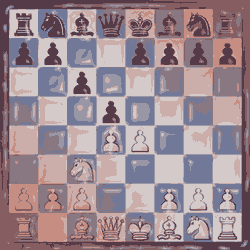Caro Kann Defense Technique
by Vijay Balaji. V
(India)
I used to play chess during my free time. I have participated and won in many chess competitions. In my early chess-playing days I feared the King’s Pawn Game. Then I came to know about Caro Kann Defense technique, through my friend.
I used to implement this technique in response to the King's Pawn Opening of 1.e4. Black responds with 1....c6 with the idea of stepping forward with 2...d5 on the next move. So, I can attack the White central pawn on e4.
There are many variations in the Caro Kann. Many times a Caro Kann opening can transpose into a French defense but when the main line plays out, Black usually has a pawn on c6. Black will then bring out his light squared bishop and eventually play e6. With the pawn on c6, Black usually decides to bring his knight to d7 and support the future knight that is on f6.
Black can bring his queen to c7 while his dark square bishop has many lines and is not blocked in by the pawns. Many people would consider Black to have a better position, especially in the endgame when the main line is played out. Usually Black does not compromise his pawn structure and will usually have an easier endgame.
The Caro Kann does not offer a flashy opening and it's not super aggressive, but it can provide you a better position at some point in the game. The Caro Kann is, however, a very good defense technique that can lead to an advantage for Black near the later stages of a chess match.
We should carefully apply the Caro Kann Defense otherwise, if the Caro Kann does not follow the main lines it tends to take on a French defense. So, I would recommend studying up on the French Defense if you want to play the Caro Kann. I definitely recommend employing this in chess games for those players who have a firm foundation of pawn structure and end game strategies.









